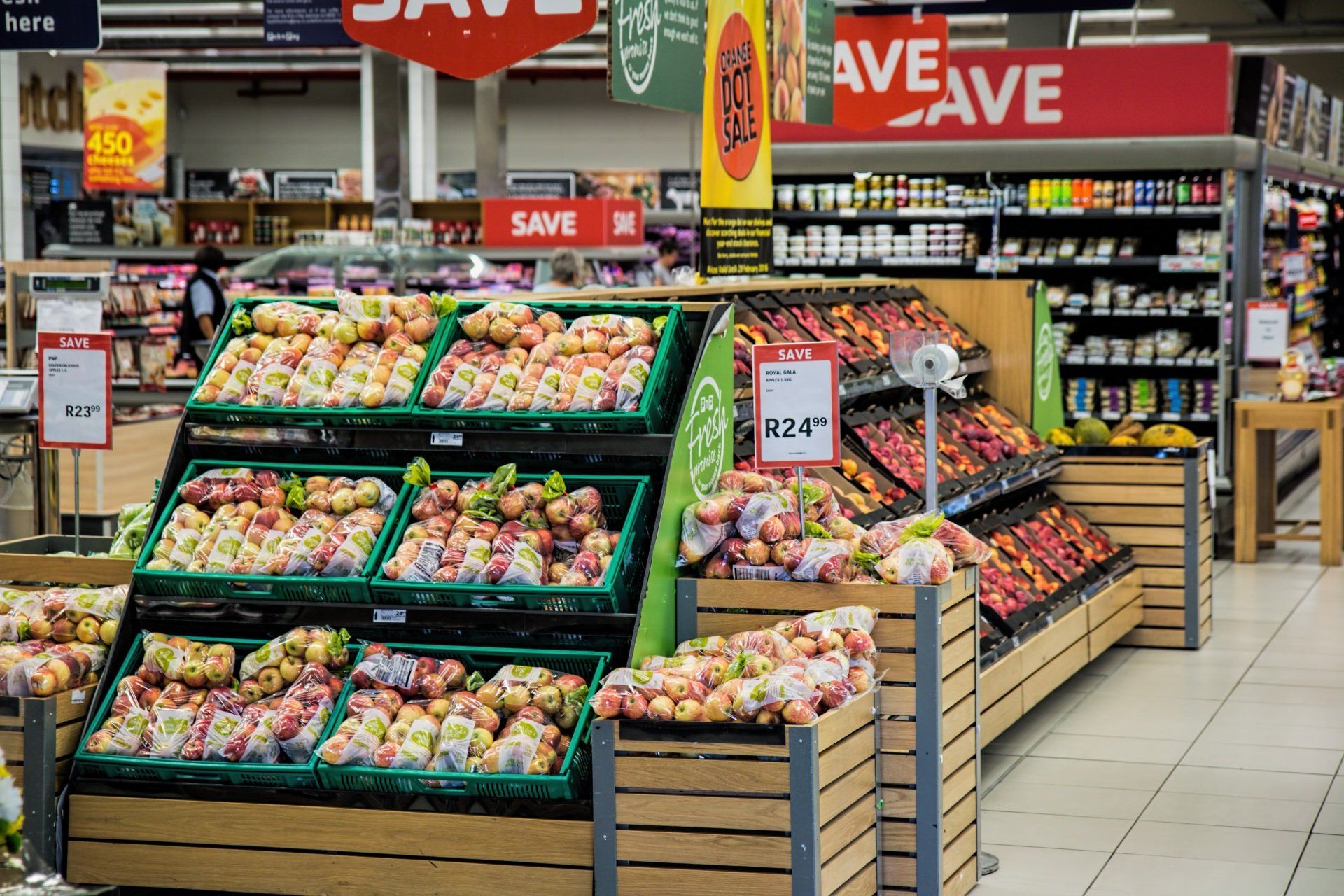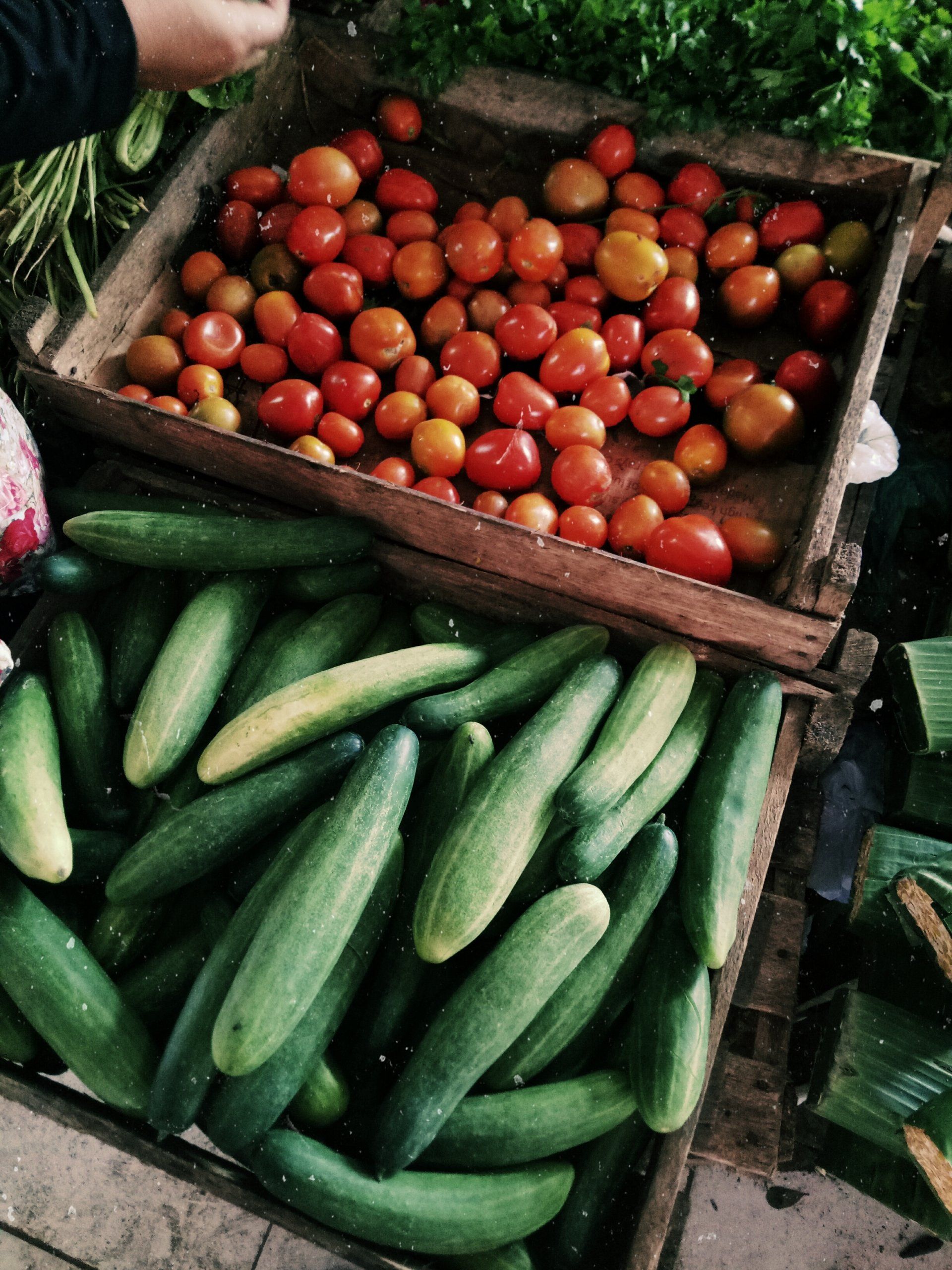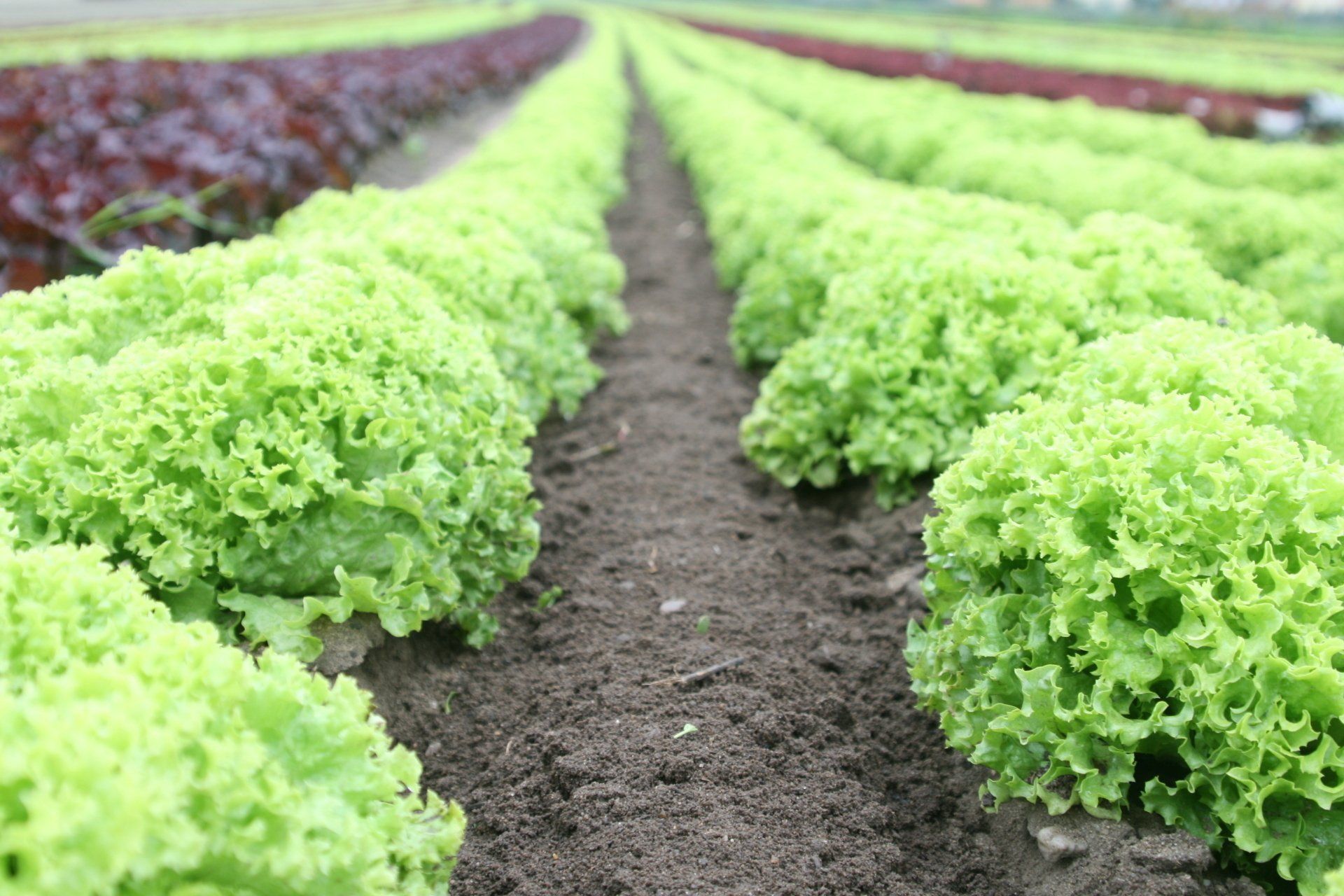Produce Season Shipping in the Truckload Market
Guide to Produce Season Shipping
Each year, with the waning of winter and the ascent of temperatures, one event dominates the North American truckload market: produce season.
The impact of produce season extends beyond the transportation of fruits and vegetables or any food and beverage freight, even if you do not route produce yourself it does impact the truckload market.
As drivers converge on regions where produce shipping thrives to capitalize on temporary rate increases, it creates a ripple effect on capacity throughout the market.
This brief produce post aims to equip you with all the essential information to monitor the yearly evolution of produce season.

What is Produce Season?
Produce season in the truckload freight market is when there's a big spike in shipping fresh fruits and veggies from farms to markets. It usually happens in spring through fall, depending on the crop and region. This surge means higher demand for refrigerated trucks to keep perishables fresh during transit. As a result, freight rates shoot up due to the increased demand, and trucking companies need to ramp up resources to meet it. This period affects pricing, capacity, and shipping schedules significantly. Shippers, carriers, and brokers must closely watch market conditions to adapt and manage costs effectively.
Produce season exemplifies one facet of the seasonal demand cycle, which is among the three primary cycles influencing the U.S. truckload market:
- The annual procurement cycle involving yearly freight bids and transportation RFPs.
- The seasonal demand cycle.
- The market capacity cycle.
This surge in shipping volume during produce season is a short-term, anticipated occurrence that commences each spring with rising temperatures and the ripening of fruits and vegetables.
Originating in the southern U.S., produce season gradually progresses northward throughout the summer months.
The resulting spike in seasonal shipping disrupts truckload freight supply across the nation, leading to fluctuating spot rates both into and out of various regions.

How does Produce Season Impact Truckload Pricing?
- Producers Harvest Crops: Farmers gather their crops from fields and trees, needing to transport them quickly to market while they're still fresh.
- Produce Shippers Secure Capacity: Freight Brokers handling time-sensitive produce shipments are willing to pay a premium for dry van and reefer capacity to prevent spoilage loss.
- Shipping Demand Spikes Across Produce Region: FTL carriers in regions with high produce volumes redirect their fleets to cater to this demand, creating a short-term capacity crunch for all shippers in these areas, regardless of whether they deal in produce.
- Rates Rise in Response to Elevated Demand: As truckload demand surges, spot market rates increase to attract more carriers to meet the freight needs. Meanwhile, inbound spot rates to produce regions start to decline as carriers seek profitable outbound loads.
- Ripple Effect Across the National Market: The influx of capacity into produce-heavy regions, such as Florida or Texas, has varying impacts across the broader spot market, depending on the existing capacity cycle.
- The Market Flips After Produce Season: Once the produce shipping season slows down, inbound spot rates rise while outbound rates decline, reflecting the shift in demand dynamics as carriers adjust their operations.

Monitoring the Movement of Produce Freight Across Different U.S. Regions
Following the bustling shipping activity of the holiday season, consumer spending usually slows down in the early months of the first quarter. Consequently, freight availability tends to decrease nationwide but starts to rebound in March, coinciding with the onset of produce harvests.
As retailers gear up for Memorial Day, shelves are stocked, initiating a surge in food and beverage summer shipping. Border cities like
McAllen, Laredo, and Miami experience an influx of produce from Mexico and Latin America, coupled with heightened holiday demand for food and beverages, making these areas hubs for
seasonal shipping demand. In
Texas and the southeast regions, the spike in demand during produce season significantly affects outbound spot rates.
| State | Aggregated Volume Surge |
|---|---|
| Florida (Miami, Jacksonville, Tampa) | +31% |
| Texas (Dallas, Houston, Laredo, McAllen) | +15% |
As temperatures climb, the primary areas for produce shipping shift accordingly.
In Q2, the focus begins with northern Florida, Georgia, northern Texas, New Mexico, and southern California. Subsequently, attention moves to the Carolinas and Northern California. Finally, the season concludes with emphasis on the Northeast, Midwest, and Pacific Northwest.
Produce Season: Laredo Texas (March-April)
While Texas sees year-round movement of produce freight, the traditional produce season kickstarts in early March, drawing increased transactional carrier capacity, both in dry and refrigerated sectors, due to a surge in produce imports from Mexico. Border cities like McAllen and Laredo experience significant volume spikes, offering new avenues for carriers seeking more freight opportunities. As trucks gravitate towards these produce shippers, capacity dwindles for other shippers within a 200-300 mile radius of these areas. With the season extending until June, outbound Texas shipments become particularly coveted by carriers.

Produce Season: Dallas Texas (June - August)
During the months of June through August, the Dallas area of Texas experiences the cotton harvest season, resulting in a tightening of capacity within the region. However, Texas boasts a diverse agricultural landscape beyond cotton, encompassing a plethora of crops such as hay, corn, wheat, sorghum, peanuts, rice, potatoes, melons, grapefruit, pecans, cabbage, soybeans, oats, sunflower, oranges, cucumbers, haylage, sugarcane, pumpkins, and spinach. This rich variety further underscores the complexities of freight transportation during peak harvest periods, requiring shippers to adapt their strategies to accommodate fluctuating demand and capacity constraints.
| Commodity | Harvested Acres | Value of Production in Dollars |
|---|---|---|
| Hay | 4,685,000 | $1,705,032,000 |
| Corn | 2,100,000 | $1,434,720,000 |
| Cotton | 2,700,000 | $969,024,000 |
| Wheat | 2,100,000 | $559,440,000 |
| Sorghum | 1,550,000 | $408,307,000 |
| Peanuts | 180,000 | $216,216,000 |
| Rice | 143,000 | $193,107,000 |
| Potatoes | 15,500 | $105,462,000 |
| Melons | 18,800 | $66,889,000 |
| Grapefruit | 10,500 | $51,590,000 |
| Pecans | 125,000 | $40,516,000 |
| Cabbage | 4,400 | $37,409,000 |
| Soybeans | 85,000 | $26,563,000 |
| Oats | 70,000 | $16,755,000 |
| Sunflower | 45,000 | $16,755,000 |
| Oranges | 5,900 | $14,784,000 |
| Cucumbers | 4,800 | $10,298,000 |
Source: USDA.Gov
Produce Season: Florida (April-June)
Similar to Texas, the Southeast region transforms into a bustling hub for produce shipments starting in mid-April and continuing until the 4th of July. While the Southeast is typically viewed as a region with higher consumption than production, the substantial surge in outbound volume driven by produce creates challenges for shippers seeking coverage. Shippers moving non-produce freight out of Florida, Georgia, Mississippi, Alabama, and the Carolinas need to carefully strategize to navigate the competition posed by the increasing volume of produce originating from the same areas. Key shipping hubs like Miami play a pivotal role, with produce shipments anticipated to flow northward to Jacksonville by mid-summer, further impacting regional freight dynamics.
What can shippers do about produce season's impact on freight rates?
To effectively minimize disruptions caused by produce season, it's crucial to establish a well-thought-out plan well ahead of Memorial Day. Start by communicating with your strategic providers to align your projected needs with their capabilities. As peak produce shipping season approaches, it's essential to monitor your carriers' performance closely and hold them accountable for meeting agreed-upon standards.
Whether you're in the food and beverage industry or not, the onset of produce season can significantly impact your carrier capacity strategy. As temperatures rise, Texas and Florida emerge as key states for produce shipments. However, it's essential to note that border cities experience spikes in March and April, making it an unfavorable time to bid out massive TL projects unless planned accordingly.
Similarly, Florida, traditionally known for consumption, sees outbound tightening from April to June, leading to much higher freight rates than normal. Shippers should prepare for challenges around major produce cities like McAllen, Laredo, Miami, and Jacksonville, especially during peak weeks in Q1 and Q2.
Prioritizing must-move freight over shipments with flexibility during these spikes is crucial.
Additionally, offering attractive pick-up and delivery times to
FTL carriers
becomes essential as truckload carriers seek quick turnarounds to capitalize on increased volume. Given the demand for temperature-controlled transport, refrigerated equipment becomes a hot commodity as many produce shippers require precise temperature control for their goods.
Produce Season FAQ
What are the shipping seasons?
Freight shipping experiences seasonal trends throughout the year. January to February sees impacts from Lunar New Year celebrations, while March to June tends to be quieter. July through October marks the peak season, and November to December returns to a quieter period.
What is the slowest months in trucking?
January to March typically marks a slower period in the transportation and logistics industry, with reduced activity and a quieter pace as the new year begins.
What is peak season in logistics?
Peak season in logistics witnesses a substantial surge in demand for transportation services. Typically, it occurs in May for the dry van market, driven by the holiday season and other seasonal events necessitating swift and efficient deliveries, leading to higher freight rates and longer transit times. Conversely, in the flatbed market, capacity may peak as early as March to July, influenced by housing starts. Meanwhile, for the refrigerated truckload market, the peak is usually from May to August.
What are the different shipping cycles?
The four stages of the shipping cycle, all are based off shipper demand: trough, recovery, peak and collapse. Currently the market is in the recovery stage.
Is the trucking market seasonal?
The trucking market operates in seasons, with peak shipping and retail shopping periods towards the year-end, followed by quieter periods in the early months of the new year. Shipping activities tend to intensify notably in May, with certain segments like flatbed remaining busy through July. Refrigerated truckload markets experience heightened activity from May through August, attributed largely to produce season, before cooling down later in the year.
TLI Insights
Get the latest logistics insights and tips from TLI's award-winning team. Stay ahead in transportation planning.
Questions? Email us at marketing@shiptli.com



